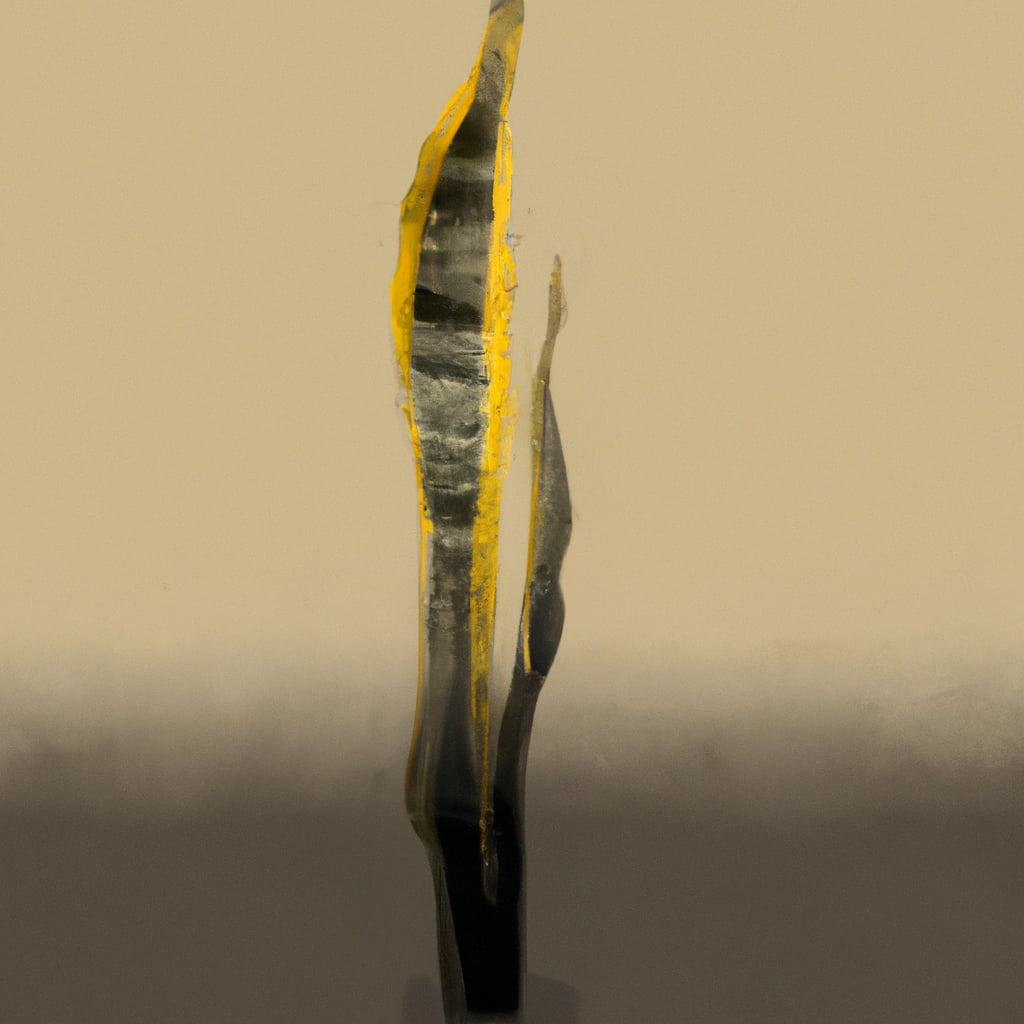Key Takeaway:
- Snake plants have a slow growth rate, which may make them less ideal for those looking for a quick plant fix.
- Snake plants are toxic to humans and pets, and can cause symptoms ranging from nausea to vomiting if ingested.
- Snake plants are picky about their water and soil conditions, and may require specific care to thrive in your home.
Introduction: Snake plants as a popular and low-maintenance houseplant
Snake plants are a top pick for low-maintenance houseplants. They’re classified as succulents and can cope with a variety of light conditions. They don’t need frequent watering or fertilizing. Houseplant enthusiasts are drawn to snake plants for their adaptability. Plus, they have upright, sword-like leaves in variegated colors, making them a great addition to any living space.
One of the cool things about snake plants is they act as natural air purifiers. They can remove toxins such as benzene, formaldehyde, and trichloroethylene from the air. Tip: Plant them in a well-draining soil mix and make sure not to over-water. All in all, snake plants are a great option for anyone looking for an attractive, low-maintenance houseplant that also cleans the air.
Snake plant disadvantage #1: Slow growth rate
Adding a snake plant to your home or office? Consider its slow growth rate. It may take years for it to reach its full height. This can be annoying if you want a quick change. Plus, the slow growth rate limits how often you can propagate or divide it. This makes it difficult to grow many from one plant.
Also, slow growth can indicate a lack of nutrients or too much light. This could take time to fix. Finally, remember that snake plants do purify air, but their slow growth rate may make them less effective than other fast-growing plants.
Still, snake plants are a popular choice. They’re low-maintenance and can survive in low light. But, be aware of the drawbacks of their slow growth.
Snake plant disadvantage #2: Toxicity to humans and pets
Snake plants are often lauded for their air-cleaning properties, but did you know they can actually be harmful to humans and pets? In this section, we will delve into the toxicity of snake plants and the potential dangers they pose. We will discuss the symptoms of snake plant toxicity in both humans and pets, as well as what can be done to treat this toxicity. It’s important to be aware of these potential dangers when caring for these popular houseplants.
Symptoms of snake plant toxicity in humans and pets
Snake plants are popular houseplants due to their low maintenance requirements. But, they can be toxic if ingested. Symptoms of toxicity include: nausea, vomiting, diarrhea, mouth irritation and difficulty swallowing. Severe cases can lead to breathing problems or paralysis.
Be sure to keep these plants away from children and pets. Symptoms vary depending on sensitivity and amount ingested. For mild cases, inducing vomiting can help. But, if it gets worse, medical attention is a must. If a pet eats it, contact a vet.
Despite its advantages, snake plants require extra caution. To avoid potential harm, be safe rather than sorry.
Treatment of snake plant toxicity
Snake plant toxicity can be risky for both humans and pets. Symptoms include nausea, vomiting, diarrhea, mouth irritation, drooling, and difficulty breathing. Immediate treatment is a must. Hydrogen peroxide or activated charcoal, recommended by a vet or medical professional, can be used to induce vomiting. Keep snake plants away from children and pets. Research potential houseplants before you buy. Snake plants may not be suitable for households with young kids or pets that eat non-foods.
Snake plant disadvantage #3: Picky about water and soil conditions
Snake plants, also known as Sansevieria, are popular houseplants. They require low-maintenance and purify the air.
But, these plants may have some disadvantages.
- The soil they need should be well-draining. If not, waterlogging of roots will lead to fungal diseases and death.
- Overwatering is also a no-no. Water infrequently and let the soil dry out between waterings.
Despite their needs, they can survive in varying light conditions. From bright and indirect to low light. They can even go for long periods without water. Perfect for forgetful people!
Snake plant disadvantage #4: Drooping or bending leaves, and brown blotches caused by pests or diseases
Snake plants are usually easy to care for, but they can have issues. Drooping or bending leaves and brown blotches can be caused by pests or diseases.
Root rot is one problem. This is caused by too much water. Allow soil to dry out between waterings to avoid root rot.
Spider mites can cause bent leaves. These pests feed on the sap and make web-like coverings. Insecticide might be needed or remove badly affected leaves.
Brown blotches can be a sign of fungus or bacteria. To prevent this, water properly and give good air circulation. If an infection happens, use fungicide or remove infected leaves.
Snake plants are usually hardy and resilient. Regular inspections and prevention will help keep your plant healthy.
Superstition regarding snake plants bringing bad luck
People have believed for centuries that snake plants bring bad luck. But science has proven that this is not true. Snake plants can offer lots of benefits. They purify the air, reduce stress levels and make a space look great. They require little care and come in different sizes, shapes and colors.
Not all cultures think snake plants bring bad luck. Some cultures think they bring good luck! They’re placed in homes and offices to keep away negative energy. These beliefs have been passed down for generations.
So, it’s clear that superstitions about snake plants being bad luck are wrong. In fact, snake plants have lots of health benefits and look fantastic. Don’t let superstition stop you from enjoying them!
Snake plant names and characteristics
Snake plants, or Sansevieria or Mother-in-Law’s Tongue, are a trendy houseplant. They have long and upright leaves in a rosette pattern. Plus, they come in various shades of green and yellow, with some species sporting variegated patterns.
These plants need little care and can survive in low-light conditions. They are also drought-tolerant, making them great for rookies in plant care. Furthermore, they are air-purifiers, removing toxins like formaldehyde and benzene from the air. Plus, they are easy to propagate; cuttings quickly take root in soil or water.
In some cultures, snake plants are believed to bring good luck and financial prosperity to the home. They are perfect for office spaces too as they can thrive in tough conditions.
Moreover, snake plants have an amazing aesthetic. Their leaves bring a modern vibe to any room. And, their upright growth pattern makes them great for corner spaces. In addition, their low maintenance requirements make them ideal for those who want a touch of greenery, without stress.
Also, these plants are sometimes known as Mother-in-Law’s Tongue due to the shape of their leaves resembling a tongue. Their unique name and cultural relevance make them a popular gift and decor item.
Snake plant care tips
Snake plants make great, low-maintenance indoor plants. To keep them thriving, here are some useful care tips:
- Lighting: Place them in well-lit areas but avoid direct sunlight.
- Water: Water only when the soil is dry and avoid letting the plant sit in standing water.
- Soil: Use a soil mix that drains well to prevent waterlogging. Sand and perlite mixes are ideal.
- Cold Temperatures: Snake plants don’t bear cold temperatures well. Keep them above 50°F.
- Pruning: Trim off any dead or damaged leaves occasionally.
- Fertilization: Fertilize once or twice a year with a balanced fertilizer.
Remember to keep the plants away from children and pets, and handle with care. With these tips, your snake plant will look its best and add greenery to your indoor space.
Conclusion: Weighing the advantages and disadvantages of owning a snake plant
The snake plant is a much-loved houseplant, popular for its many benefits. But, it does bring with it some drawbacks. This article covers both the pros and cons of owning a snake plant.
For starters, snake plants are easy to care for and low-maintenance. They can handle many kinds of light and don’t need frequent watering. This makes them great for busy people or those new to owning plants.
Another big advantage is the snake plant’s air-purifying abilities. It can remove toxins like benzene, formaldehyde, and trichloroethylene that are bad for humans. Meaning, it’s great for any home or office.
Unfortunately, there are some health risks with snake plants. They release toxins like carbon dioxide at night, which can be dangerous in small or poorly ventilated spaces. Plus, they’re toxic to pets, so keep them away from furry friends!
Five Facts About Snake Plant Disadvantages:
- ✅ Snake plants can be toxic to cats and dogs if ingested. (Source: Nature of Home)
- ✅ Snake plants have slow growth rates, which may bother some people. (Source: Embrace Gardening)
- ✅ Snake plants have unsightly drooping leaves when diseased. (Source: Embrace Gardening)
- ✅ Snake plants are picky about their water and soil conditions, requiring proper care. (Source: Embrace Gardening)
- ✅ Snake plant leaves contain saponins and glycosides, which can cause toxicity when consumed in large quantities. (Source: Nature of Home)

A passionate gardener and founder of ForTheLoveOfGardeners.com. She shares her expertise to help you cultivate thriving gardens and find joy in the beauty of nature.
